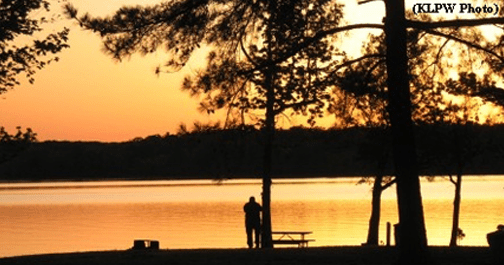(Photo courtesy R.F. Timberlake – Kerr Lake Park Watch on Facebook and Shutter Art Gallery)
••••••••••••••••••••
Kerr Lake covers about 50,000 acres when it’s at normal elevation, but if the lake level were to reach its maximum elevation of 320 feet above sea level, the lake would more than double in size. In short, Kerr Lake is a BIG topic. So big, in fact, that Kerr Lake, Part 2, was the subject of Thursday’s tri-weekly history program on Town Talk.
Bill Harris and Mark Pace talked about what’s around – and under – the lake, which has 850 miles of shoreline and touches six counties in North Carolina and Virginia.
A plane that crashed into the lake in Clarksville was eventually removed, but there’s still a train submerged in Nutbush Creek, Pace said.
The plane crashed in 1962 and it took almost a month to find the right equipment to extricate it. The lake is between 90 feet and 100 feet deep in the deepest channels, and the U.S. Army Corps of Engineers didn’t cut down all the trees in the area that soon would be submerged. The plane, as it turned out, had gotten tangled up in that submerged forest. A barge equipped with a crane had to be transported from the coast to retrieve the wreckage.
As for the train, Pace said a forest fire scorched a wooden bridge over Nutbush Creek in the early 1900’s. A group of Townsville residents went together to start up a short railroad line that ran from Manson to Townsville. “It was a barebones affair,” Pace said, with two engines, a coal car and a couple of passenger cars.
When the train pulled into Townsville, there was nowhere for it to turn around, he said, so it had to go backwards on the return trip to Manson. The bridge was about 70 or 75 feet above the water, and it held up for the passenger cars and the coal car to cross. But the engine was too heavy, and the train plunged into the water “and basically impaled itself into the mud of Nutbush Creek,” Pace said. The engineer and the fireman were killed.
There are stories of picnics and church gathering being held near the wreck site years later and whoever could swim down to the wreckage and ring the train’s bell would get a prize.
The lake has a long history of providing recreational activities like picnics and church gatherings, as well as boating and camping, but there remain residual bad feeling toward the Corps, Pace said. “Most of what they bought was farmland, and not particularly good farmland,” he said. But it was still family land and the average price was only about $75 per acre. That amount would only be between $400 and $500 an acre today.
“Now there’s a strip of land that you’re not allowed to develop around Kerr Lake,” Pace said, to adhere to Corps restrictions. Fifty years ago, however, the shoreline would not have looked at all like it does today because it had been farmland and would have taken some years to become wooded.
